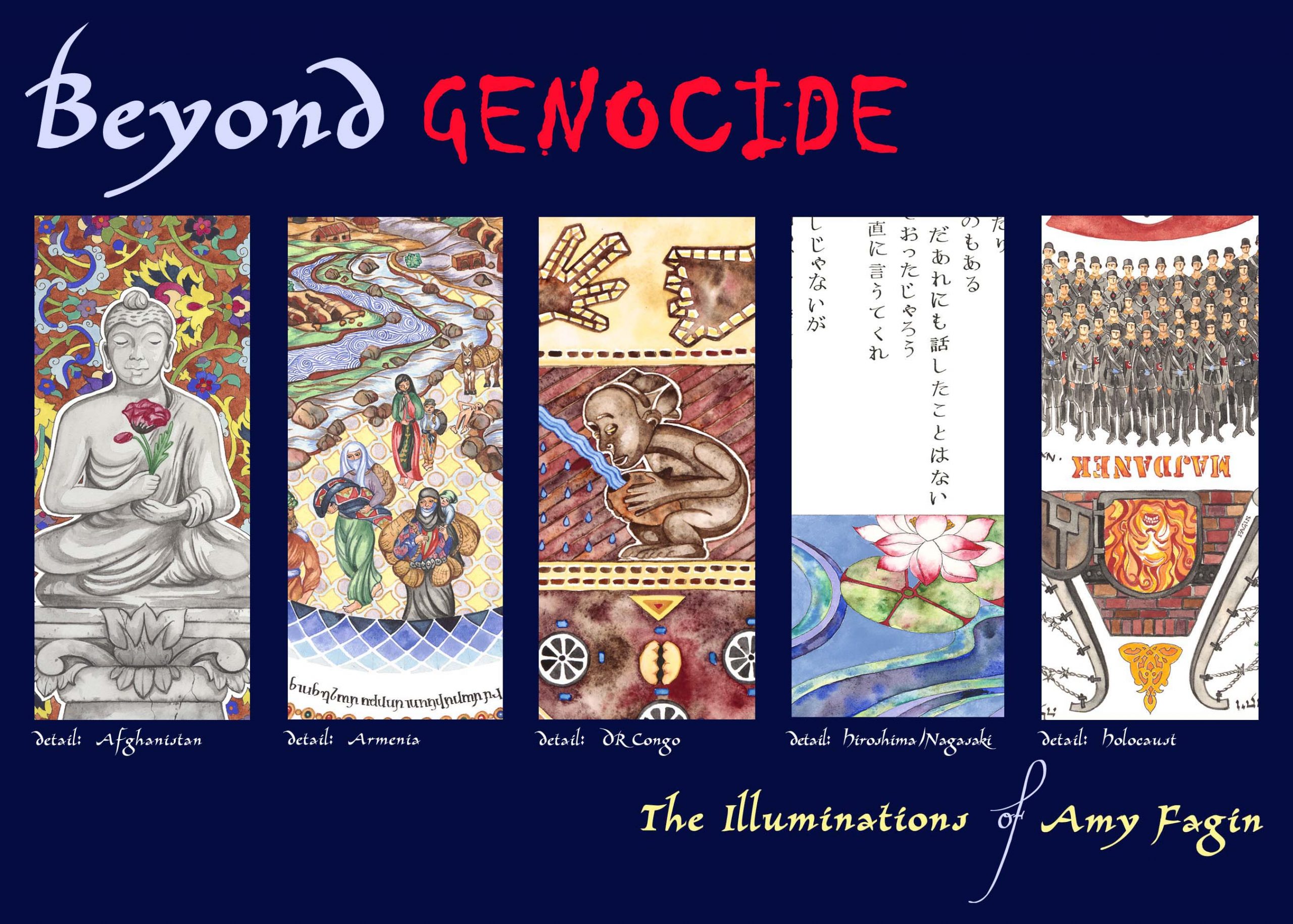RESOURCES ON MASS VIOLENCE AND AESTHETIC EXPRESSION
How does culture shape creativity? Creative processes and their psychological and cognitive foundations and applications are evident in all aspects of human behavior. As a form of strategic thinking related to problem solving the creative process allows for a plethora of cognitive impulses such as insight, conceptual blending, metaphor, analogy, spontaneous imagination and integration of fragmented or counterfactual thought. The junctures where artistic expression engages with the collective behavior of intentional violence is the subject of the resources found in this section. Resources providing critical analysis on production, curation, exhibition, performance and the relationships between these cultural processes and the social change that they represent can be found here.
How Does Culture Shape Creativity? A Mini-Review: This journal article examines empirical data across disciplines to define the impact of culture on creativity. Analysis from this article evaluates the relationship between cultural norms and settings of distinct geographical regions and societies and individuals who are engaged in creative production within each socio/geographic context. Definitions of creativity and the contexts of the cultures within which creative processes are executed are inter-dependent and socio/specific.
Routledge International Handbook of Intercultural Arts Research: “For artists, scholars, researchers, educators and students of arts theory interested in culture and the arts; a proper understanding of the questions surrounding “inter-culturality” and the arts requires a full understanding of the creative, methodological and interconnected possibilities of theory, practice and research.” This handbook provides a comprehensive introduction to intercultural arts practice and theory, research methods and multi-disciplinary analysis.
Creative Approaches to Reconciliation: In the aftermath of violent conflict, investing in artistic and cultural renewal is not typically preferred strategies to support reconciliation, falling behind the necessities of basic needs or truth and reconciliation measures. This article makes the case for creative expression as a critical necessity to transform aggression into empathy and the “desire for revenge into desire for affiliation”.
Handbook of Research on the Impact of Culture in Conflict Prevention and Peacebuilding: This publication “examines cultural differences in conflict resolution based on various aspects of culture such as morals, traditions and laws. Highlighting a wide range of topics such as criminal justice, politics and technological development, this book is essential for educators, social scientists, political leaders, government officials, academicians, conflict resolution practitioners, world peace organizations, researchers and students.”
The Arts as Healing Power in Transitional Justice: This student essay looks at established and traditional cultural practices that address issues of social injustice and grievances associated with the pain of absorbing grief from loss, death, trauma and violence. The author explores how the role of the arts ( theater, craft, music, film and storytelling) provides a platform for expression whereby survivors can share their experiences and tell their stories as a form of transitional justice.
Regarding the Pain of Others: This 2004 watershed publication by Susan Sontag on viewing, imagery, media and the capacity for selectivity and duplicity in the act of looking, spectating, depicting, representing “the pain of others” is essential first reading for the educator, curator, artist, performer, scholar, witness or the concerned to reckon with the emotional power and the seduction of curated abstracted reality of violence and suffering.
Transitional Justice and the Arts: Reflections on the Field: This essay investigates arts activities as a critical practice to foster the principles of transitional justice in a society, that is: activities that bring about truth, reparation, institutional reform, demobilization, national consultation processes as mechanisms to come to terms with past atrocities. The complexities of arts expression is investigated in “transitional societies” as they impact on the ground and instill a plethora of new meaning which reveal a dearth of “methodological frameworks” with which to evaluate their impact on transitional justice.
Art From a Fractured Past: Memory and Truth Telling in Post Shining Path Peru: This edited volume by noted historian, Cynthia Milton examines the artistic cultural processes that unfolded in Peru in the aftermath of their 20-year civil war. The extensive research with this case study provides the reader with a schematic for broadening the definition of witness and testimony to include artistic production as a valid form of documentary evidence. The diverse genre that are analyzed posits the “multiple possibilities of artistic language” to construct understanding and imaginative witnessing as a form of historical elucidation.
Curating Difficult Knowledge: Violent Pasts in Public Places: The essential reading essays in this volume explore the questions that frame the current debates around cultural expression and the narration of traumatic histories. This volume is an exemplary handbook bringing to the forefront the relevance of creative and participatory aesthetic expression. Asking the critical question: “Where are we, as scholars, curators, artists, activists – in our imperfect attempts to bear witness to conflicts that have passed, even as their echoes or in some cases the structures that gave rise to them persist?”
The Contribution of Art and Culture in Peace and Reconciliation Processes in Asia: How can art and culture contribute to peace and reconciliation processes in post-conflict societies? Through a series of case studies this paper highlights how art methodologies can provide the non-didactic, participatory tools necessary for building relations between groups and contributing to long-term peacebuilding processes. It recommends long-term investment in local community models that use art and culture methods that support rebuilding societies that value human rights, peace and tolerance. “




